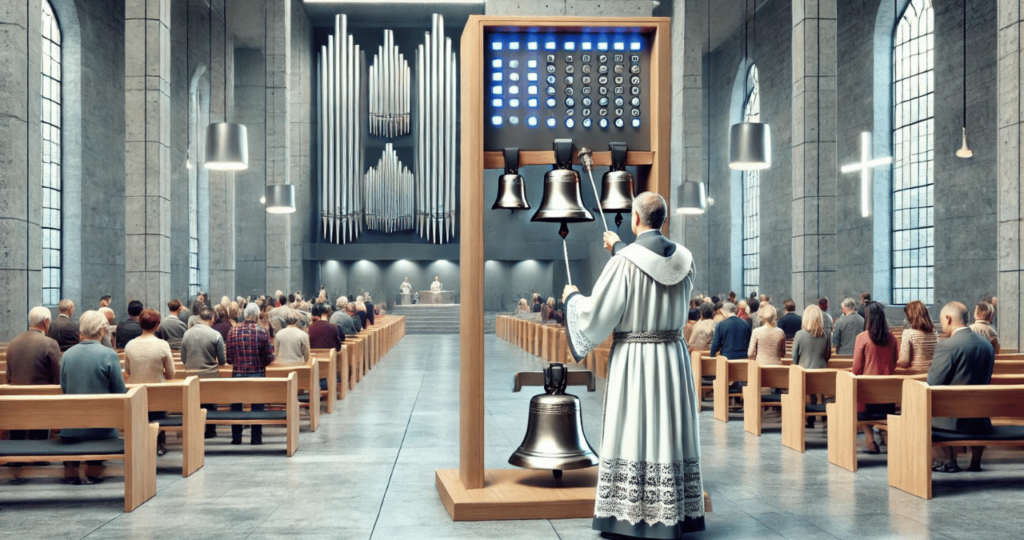In contemporary worship settings, the role of a colorant,clochant, has evolved significantly from its traditional roots. While the clothiclochantng’s primary duty remains to manage the church bells and coordinate their ringing, modern challenges have reshaped how this role is performed and perceived. This article delves into the key challenges clochants face today, exploring the impacts of technology, changing congregational dynamics, and the broader societal shifts influencing this historic role.
- Technological Advancements
One of the most significant changes affecting colorants is the rise of technological advancements. Modern churches often incorporate electronic bell systems that can replicate the sound of traditional bells without the physical effort required to ring them. These systems offer convenience and precision but need help for clochants accustomed to conventional bell-ringing methods.
Impact of Technology on Traditional Skills:
The transition to electronic systems can lead to a decline in traditional bell-ringing skills. Clochants who have spent years mastering the art may find their skills need to be more relevant. This shift requires colorants to adapt to new technologies and learn new technical skills to operate and maintain electronic systems effectively.
Balancing Tradition and Innovation:
Clochants must balance embracing technological advancements and preserving the traditional aspects of their role. Some congregations may prefer the authenticity of live bell ringing, while others may opt for the convenience of modern systems. Clochants need to find ways to integrate new technologies while maintaining their role’s cultural and historical significance.
- Changing Congregational Dynamics
Contemporary worship settings often feature diverse congregations with varying preferences and expectations. The changing dynamics of congregational engagement present several challenges for colorants:
Diverse Worship Preferences:
Modern congregations may have diverse preferences regarding worship practices, including bells. Some congregants might view bells as a traditional element, while others may consider them outdated or unnecessary. Clochants must navigate these differing opinions and find ways to cater to the needs and expectations of a varied audience.
Increased Focus on Inclusivity:
With a growing emphasis on inclusivity, colorants may face challenges ensuring that bell-ringing practices are accessible to all congregation members. This includes considering how to accommodate individuals with sensory sensitivities or those who may not appreciate the auditory aspects of bell ringing.
- Maintaining Engagement and Interest
Keeping the role of clothing relevant and engaging can be challenging in a rapidly evolving worship environment. The role’s historical significance may sometimes clash with contemporary worship practices:
Engagement Strategies:
Clochants need to develop strategies to keep their role engaging and relevant. This may involve integrating bells into modern worship practices, creating innovative bell-ringing performances, or collaborating with other church members to enhance the worship experience.
Educating the Congregation:
Educating congregants about the historical and cultural significance of bell ringing can help maintain interest and appreciation for the role of the clothing. This might include organizing workshops, demonstrations, or informational sessions to highlight the importance of this tradition.
- Financial Constraints
Financial limitations can impact the ability of churches to maintain and upgrade bell systems or support the role of clothing:
Budget Constraints:
Many churches operate with limited budgets, which can affect their ability to invest in high-quality bell systems or support staff. Clochants may need help acquiring the necessary resources or funding for maintenance and upgrades, which can impact the quality and effectiveness of bell-ringing practices.
Fundraising and Resource Allocation:
Clochants may need to participate in fundraising efforts or seek alternative funding sources to address financial constraints. This could involve organizing events, seeking donations, or exploring grants to support the maintenance and enhancement of bell systems.
- Preserving Historical Integrity
Maintaining the historical and cultural integrity of bell-ringing practices can be challenging in contemporary worship settings:
Balancing Tradition with Modern Practices:
Clochants must find ways to balance preserving historical practices with the demands of modern worship settings. This includes preserving traditional bell-ringing techniques while adapting to contemporary needs and preferences.
Restoration and Conservation:
Clochants may be involved in restoring and conserving historical bell systems, which can be challenging and rewarding. This task requires specialized knowledge and skills to preserve historical bells for future generations while remaining functional in a modern context.
FAQs
1. What are the primary responsibilities of a colorant in contemporary worship settings?
A clochant is primarily responsible for managing and ringing church bells. This role may also involve operating electronic bell systems, coordinating bell ringing with worship services, and maintaining the equipment in contemporary settings.
2. How has technology impacted the role of clothing?
Technology has introduced electronic bell systems that can replicate the sound of traditional bells. This advancement has impacted the conventional skills of bell ringing, requiring colorants to adapt to new technologies while preserving the authenticity of live bell ringing.
3. What challenges do clochants face with changing congregational dynamics?
Clochants face challenges related to diverse worship preferences and increased focus on inclusivity. They must navigate differing opinions about the role of bells and ensure that their practices are accessible and engaging for all congregation members.
4. How can clochants maintain engagement and interest in their role?
Clochants can maintain engagement by developing innovative bell-ringing performances, integrating bells into modern worship practices, and educating the congregation about bell-ringing’s historical and cultural significance.
5. What financial challenges do clochants encounter?
Clochants may face financial constraints in maintaining and upgrading bell systems, as many churches operate with limited budgets. To address these challenges, they may need to participate in fundraising efforts or seek alternative funding sources.
You May Also Read: https://bristoweekly.com/make1m-luxury-watches/

